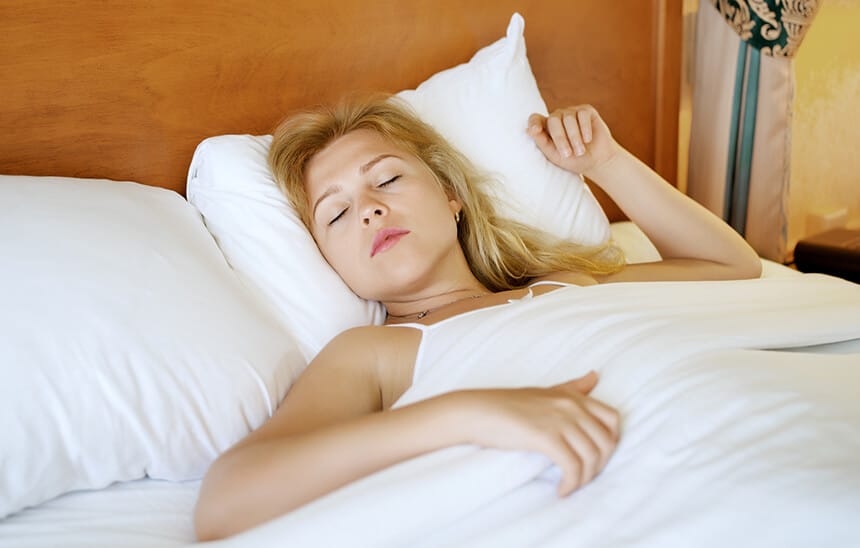I am often asked about which position would be best to sleep in. Since we spend about a third of our life sleeping, bed posture can be as important as our standing or sitting posture. In fact, some experts believe that the position we sleep in may have as much effect on us as walking around with a permanent slouch.
Good sleep posture is important in order to avoid aches and pains as well as having a significant impact on our emotional and mental state. If that is the case then we probably should pay more attention to the position we choose to fall asleep in.
So what sleep position is best for us?
I’ve included some information about the most common sleep position and what impact they may have on our body.
Foetus Position

Lying on either side with your knees slightly bent is one of the healthiest sleep positions. It will help you maintain a straight back, allow air to pass freely around your body, and can deter stomach reflux.
However, this position may not be comfortable if you have a soft mattress or an hourglass figure. For those people, this position may cause lower back discomfort or pressure on your hips. In extreme cases, the sustained pressure on the hip can lead to bursitis (inflammation of a fluid sack on the side of the hip) especially in those who are overweight. Others may find that side sleeping causes them neck and shoulder tightness and may lead to nerve compression.
Tips
- To avoid pressure on the hip, try placing a pillow between your bent knees.
- If you have any lower back discomfort, a pillow under your waist will help support your midriff and lower back.
- Make sure to use a correct number of pillows to keep your head aligned with your body and keep your arms by your side, or stretched out in front of you to help avoid nerve compression.
Lying on Your Front

I would discourage sleeping in this position. It is generally considered the worst possible sleep position, due to the way it alters the natural curve of your lower back. This position often involves rotating the head to one side, which may cause neck strain and stiffness. If you sleep with your arms up or wrapped around the pillow, you may find that you will suffer from pins and needles (resulting from compression of the bundle of nerves exiting from your neck).
The only advantage of this position is that it is likely to significantly reduce snoring!
Tips
- Try another position!
Lying on Your Back

Sleeping on your back can be a beneficial position to sleep in as it keeps your head, neck and spine aligned. However, if your legs are kept straight, you may feel your lower back arching which can cause strain due to lack of support. An additional important factor to consider is the use of pillows. When using a pillow in this position, make sure to keep your neck aligned with the body. Avoid using too many or not enough pillows which will result in flexion or extension of your neck respectively. Muscle strain on the neck and shoulders in this position can potentially lead to headaches.
The main drawback to sleeping on your back is the likelihood of snoring, which does not encourage a good night’s sleep. If that doesn’t wake you up, it will certainly disturb your partner!
Tips
- If you prefer to sleep in this position, try to place pillows under your knees to help maintain the curve of your lower back and avoid strain.
- Make sure you have the appropriate number of pillows to support your head, keeping it in a neutral position.
- Buy your partner some ear plugs!
Finally, some additional tips
- Regular gentle exercise can help improve sleep patterns by using up excess energy, helping you to sleep more at night.
- Try to avoid exercising late in the evening as the endorphins released by the brain can prevent you from falling asleep.
- Try to unwind and relax before going to sleep, as otherwise you can be kept awake both mentally and physically.
- For further advice on sleep posture, pillows and mattresses don’t hesitate to ask when you visit us next.
